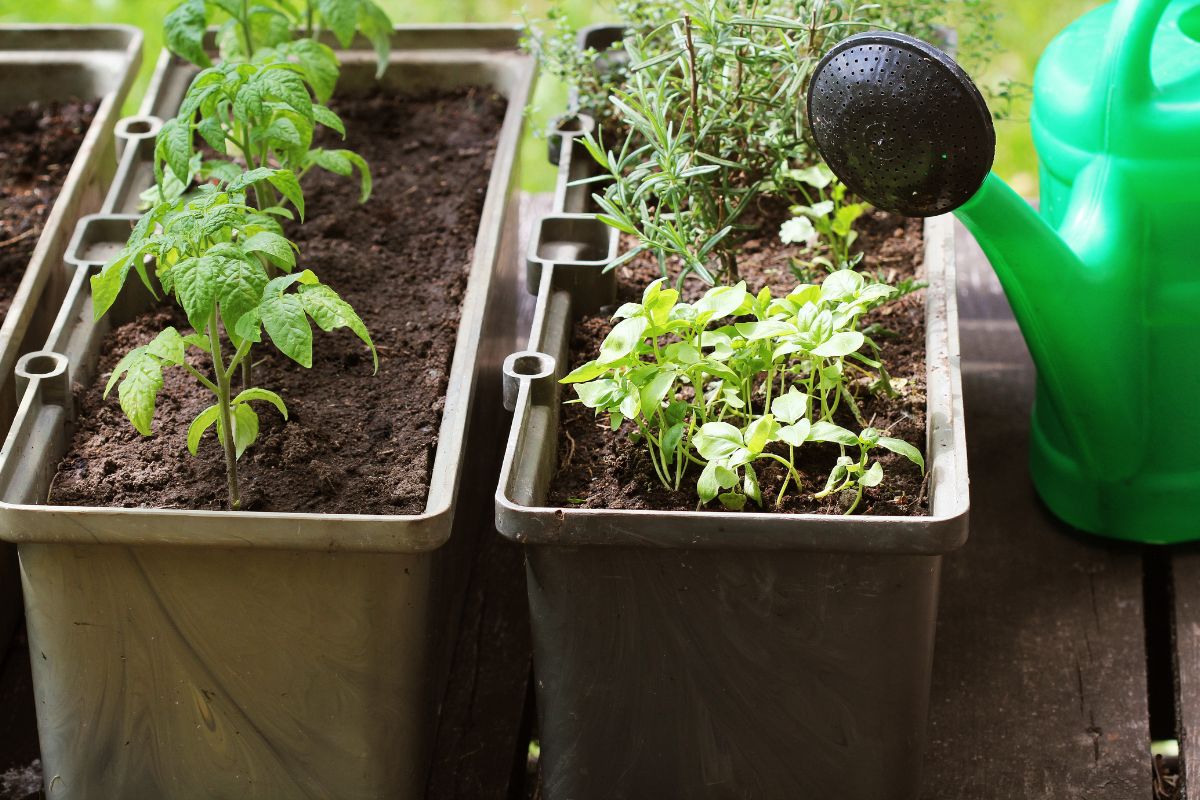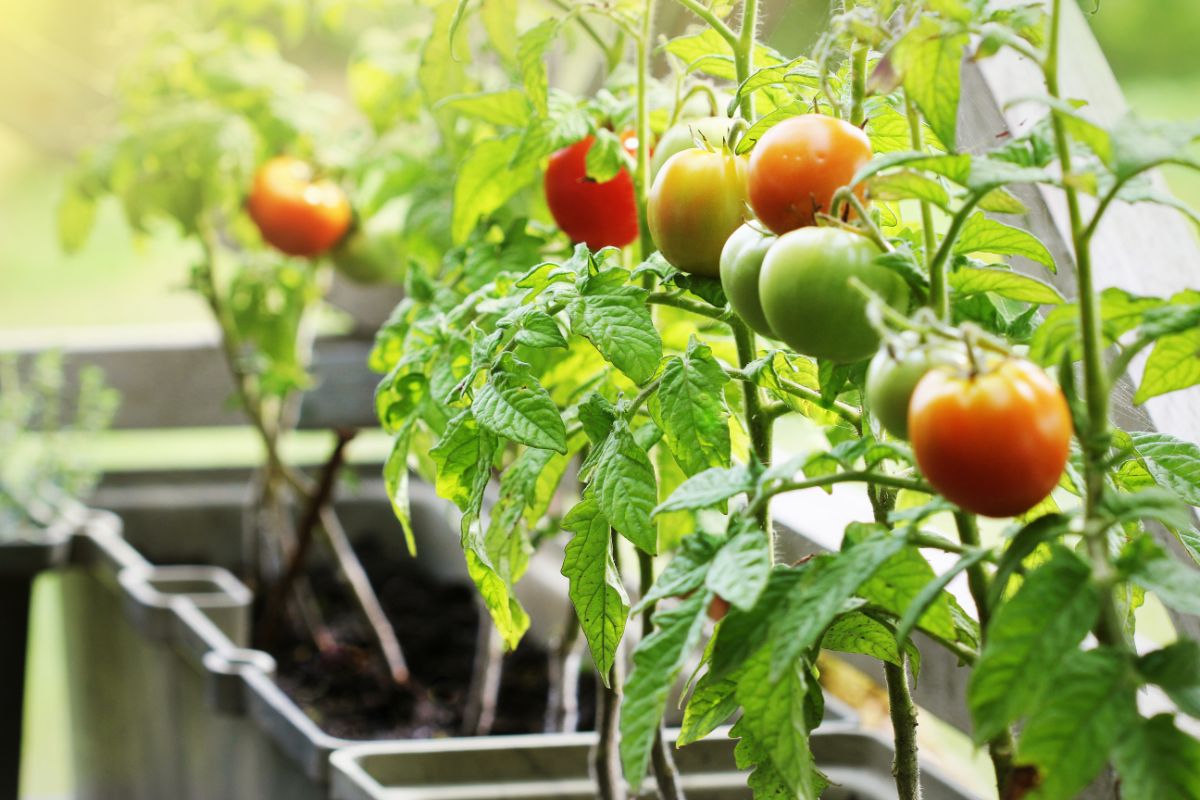Whether you live in a dry or hot climate or you are never home – or maybe you are just that type of person who is forgetful – a self-watering planter is a wonderful idea.

When you have plants that do not do well when the soil dries out, or they despise the thought of getting their leaves and stems wet, then you may want to use a self-watering planter.
A self-watering planter also is great for balconies too, or areas that you struggle to water those plants of yours. In this article we shall talk all about self-watering planters and containers.
So, read on to find out more!
What Actually Is A Self-Watering Planter?
You might think that a self-watering planter is something that frequently waters the plant, however this is not the case. Instead, it provides a source of water to keep the soil moist. This actually means that you do not have to water the plant very often.
Depending on the style of planter or container, or the brand itself, the basics of the planter pretty much stay the same. Water is put into a reservoir and then this is absorbed up into the planter above which contains the soil and plant.
How Is A Self-Watering Planter Helpful?
A self-watering planter is very helpful, especially if you need to keep the soil of a plant constantly moist. It means that you will not need to water your plant for at least a week.
If you plan to be on vacation or you are a little forgetful, then a self-watering planter also means that you can leave the plant for a few days, no problem. However, you will not want to use a self-watering planter for plants which do not require moist soil.
For example, succulents and cacti do not do very well with constantly moist soil. Instead, you will want to let these dry out in between watering. They would prefer this much better! For this reason, never put them in a self-watering planter.
Also, some plants and veggies just do better when they have a consistent supply of water. For example, tomatoes. Some plants struggle with being watered and then left for two weeks, and then being watered again and left for 4 weeks.
What Are The Main Features Of A Self-Water Planter Or Container?
There are a few main features of a self-watering planter. Not every single version will have these features, but these are some of the most common things they have:
- Reservoir for water
- Container for plant
- Mechanism for ‘wicking’ the soil
- Spout or a hole for overflowing water
- A fill tube
- An indicator to show water level
- Drainage holes
How Do These Self-Watering Planter Features Work?

You will find that the bottom half of the planter is dedicated to the water, while the top half is the soil and the plant itself. Planters generally vary when it comes to size, so you will be able to find one that suits the type of plant that you own.
Reservoir
Sometimes a small planter only has a reservoir that can hold around 1 gallon of water, while a bigger one might hold up to 5 or 6 gallons. Generally for a smaller plant you will not need something so large.
To find out how much you need, pick a reservoir that looks like it can provide water for the amount of potting mix in the planter for at least a few days.
This will ensure that you are not watering your plant most days.
Indicator
Having an indicator on the side of a self-watering planter ensures that you know exactly how much water to add in. This means that you will not be adding too little or too much water.
However, a good planter will have a mechanism for any overflow. It will drain unnecessary water out of the reservoir.
A water level indicator will also help to let you know when you need to add more water too.
Drainage
You will need to have drainage when it comes to a self-watering planter. It means you can remove the water when you need to, especially during the changing of the seasons.
If you do not have drainage, then you will find it difficult to remove the water without tipping the plant upside down!
How Does A Self-Watering Planter Work?
When it comes to how a self-watering planter works, essentially both methods are the same. There is the ‘wicking’ method and the ‘direct’ method. Below we shall discuss both.
Direct Self-Watering Planter Method
The most common method of self-watering planters uses the ‘direct’ method. This means placing a section of the container directly into the water reservoir.
The wet potting mix within this section contains water which is ‘sucked’ up into the planter by capillary action. This keeps the plant hydrated.
Wicking Self-Watering Planter Method
A wicking self-watering planter has a ‘wick’ which is put inside a container. One end of the wick touches the water while the other end of the wick is nestled into the potting mix.
The wick itself absorbs the water and releases it into the soil to keep it nice and moist.
Can You Make Your Own Self-Watering Planter?
Yes, you can make your own self-watering planter. In fact, you can do so out of a used 2 liter soda bottle. All you need are scissors, a soda bottle, potting mix, and cotton wool.
However, if you would prefer, you can also purchase some really good self-watering planters too. Just remember to find a size that suits the plant you are putting into the container.
Final Thoughts
Self-watering planters are a great thing to use if you need to keep the soil of a plant constantly moist. It is also a helpful thing to use if you plan to be away on vacation, or are forgetful at watering a plant.
However, just remember not to use a self-watering planter for plants which need dry soil.







